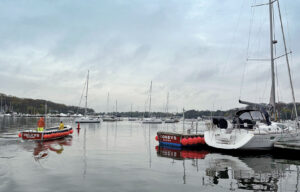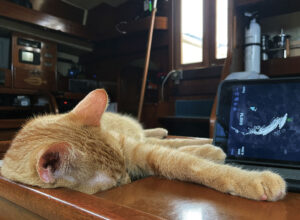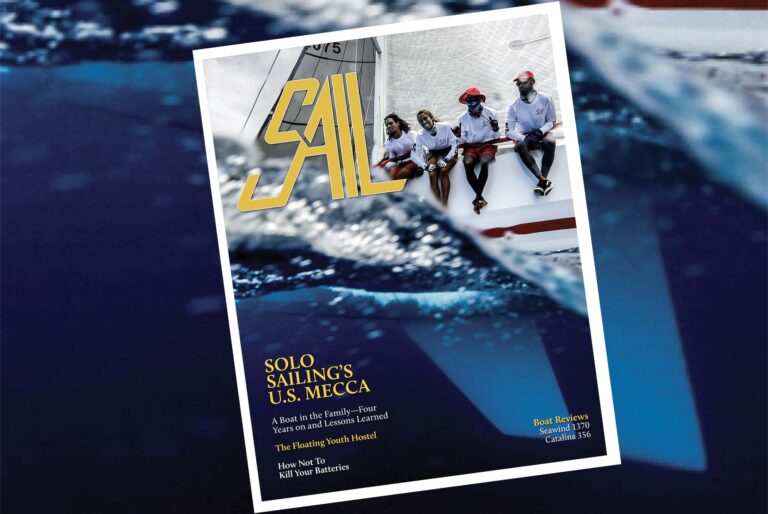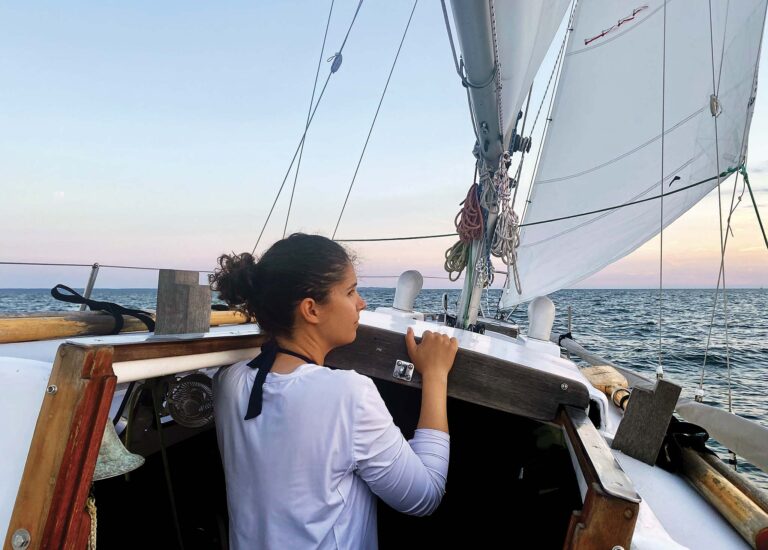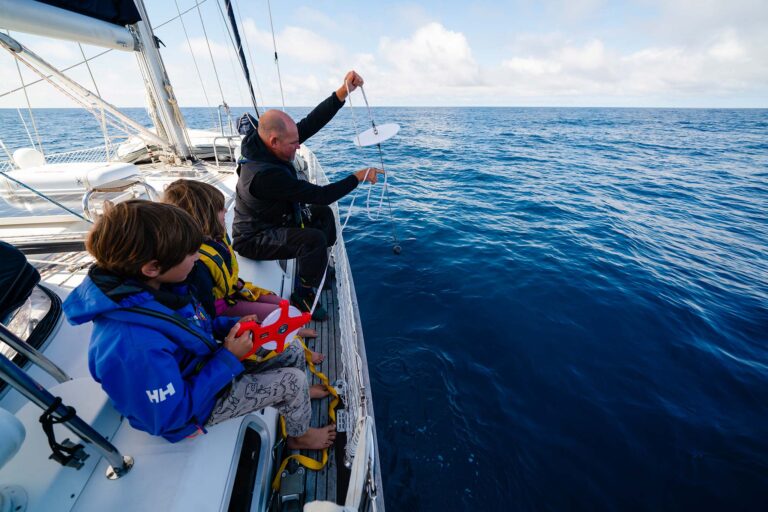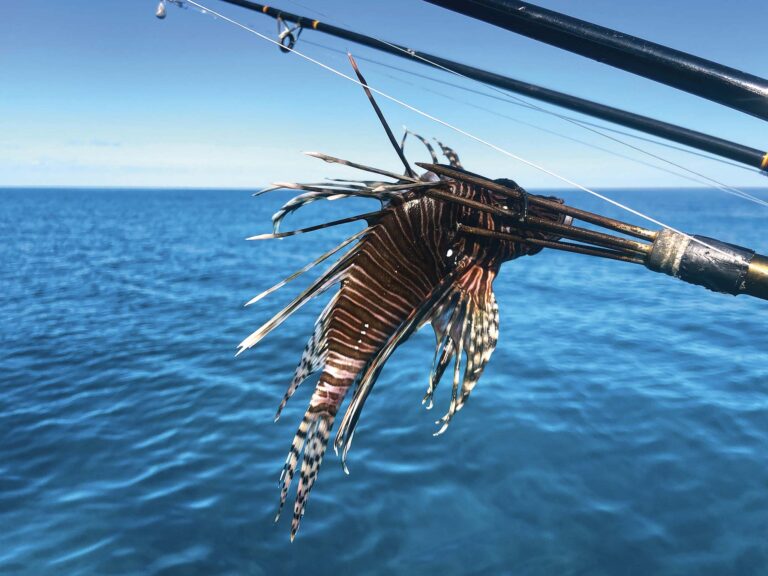
My husband and I both love sailing, whether it’s a simple day sail or dreaming of future voyages. And when things get a little dull, or our fantasy life needs a little boost, there’s nothing like shopping for a new boat to stir things up again.
Many sailors like to shop for new boats, and they aren’t exactly notorious for downsizing; in fact, it’s quite the opposite. We followed the customary pattern of continuing to buy boats, except downsizing wasn’t our issue. We don’t seem to be able to get rid of the old boats. They just keep accumulating. Last summer we were up to seven, ranging from 8ft to 32ft. I suppose some people might say we have a problem.
While we’re not exactly poor, by yacht owner standards we aren’t rich either. The aggregate purchase price for our entire fleet is around the cost of a high-end Waverunner PWC. And the average age of the vessels in our care is 36 years. Only the two homemade plywood sailing dinghies are less than 30 years old.
Because we specialize in elderly boats that few other people want, the concrete ketch we went to look at a couple of winters ago seemed like a perfectly logical addition to our fleet. We spotted her during a visit to San Diego while scanning the classifieds. She was listed as a “38ft Gass Headed Alkins Ketch,” which we interpreted as a, “38ft Gaff Headed Atkin Ketch.” After a call to the broker and an Internet search, we confirmed she was a variant of Ingrid.
There are certain designs that are legendary among sailors who gravitate by preference (or necessity) to the classics. Nearly all of William Atkin’s designs are held in high esteem by these folk, but his oceangoing Ingrid is one of those select few that puts the daydream setting on high among those afflicted with the South Seas syndrome.
“Let’s go look at her, $19,000 for a 38-footer sounds pretty cheap,” my spouse said.
“I bet we can get her for $10,000,” I offered by way of agreement.
She was located over 100 miles away up in Los Angeles, but by pure luck, only four miles from my aunt’s house in San Pedro, who we had planned to visit anyway.
The Internet navigator gave us a bum steer in our search for Berth 202. But after being chased off another wharf by Homeland Security, we eventually found her around the corner from the refinery, down behind the railroad bridge and just past the row of Tidelands Oil Field sucker pumps.
Here, tucked away in a backwater of the most industrialized harbor I’d ever shopped in, was a proper little ship. She was old, to be sure, probably 1980s, but her builder had done a workmanlike job on her ferrocement hull. Having recently arrived from Hawaii, she was well equipped and ready to cruise, complete with provisions, including a case of canned tuna, a one-gallon tin of soy sauce (almost full) and several gigantic restaurant-pack-sized cans of refried beans. Sitting in her large sunlit cabin we talked and dreamed of faraway horizons for an hour.

The feature that impressed us the most, though, was her engine room. For people used to contorting themselves into pretzels around the joinery, sink drain and sea cocks of our 32ft 1968 sloop just to check the oil on the old Atomic Four, the space here was a delight; with room enough to sit comfortably on all sides of the four-cylinder Perkins diesel. And the engine was clean, rust free and appeared happy and well cared for. We sat and marveled at all the space and then decided to see if the engine would start. After considerable searching, we found the start button tucked away behind an opening port in the aft end of the cockpit and pushed it. After a few brisk cranks, the engine stuttered to life. There was a moment of panic when my aunt on the dock beside us called out, “No cooling water coming out,” but the appropriate waterline valve was soon located. This was a huge relief because none of us could figure out how to shut the engine off.
As it chugged away, we puzzled our way around the cockpit, the aft part of the cabin and finally around the engine itself. Between us all we had about five minutes of total diesel experience—my spouse, myself and my aunt, a retired sailor, were familiar only with two-cycle motors and gasoline-powered inboard engines with ignition switches. There was no obvious button or key anywhere. I pictured it running for days until it ran out of fuel—roughly 75 gallons worth.
“Call the broker up. Maybe he knows how to shut it off,” somebody said.

“You’re kidding,” said the broker after I had reached him on the cell phone. “You don’t see a shutoff?” He sounded amazed and annoyed at the depth of our ignorance. “Well look around, it’s there somewhere.” “OK. Will do,” I told him.
A few minutes later a welcome silence settled over the boat. My resourceful husband had traced the throttle control cable to the front of the engine and noticed a strategic little part with a spring. After several tries, he managed to push it against the spring, and the motor obediently stopped. A thin piece of steel wire lay over the top of the engine, apparently accidentally pulled loose from the strategic little part by a previous prospective buyer when they had shut her down.
Unnerved by the depths of our ignorance, we decided we had seen enough of the concrete Ingrid, so we closed her up and headed for the car. On our way back to civilization just past the row of oil pumps the cell phone rang. “Did you shut it off?” the broker asked, sounding noticeably short. “Yes sir!” my husband told him.
Maybe we’re not quite ready for bluewater diesel engines yet. But boat shopping is so much fun. My spouse just checked eBay this morning and saw an awesome little Nova Scotia-built schooner down on Long Island. We can get down there and back in a weekend. Might have to go take a look.
Susan Peterson Gateley writes and sails mostly on Lake Ontario. View her documentary and boats at susanpgateley.com
Photos courtesy of Susan Gateley
May 2017



